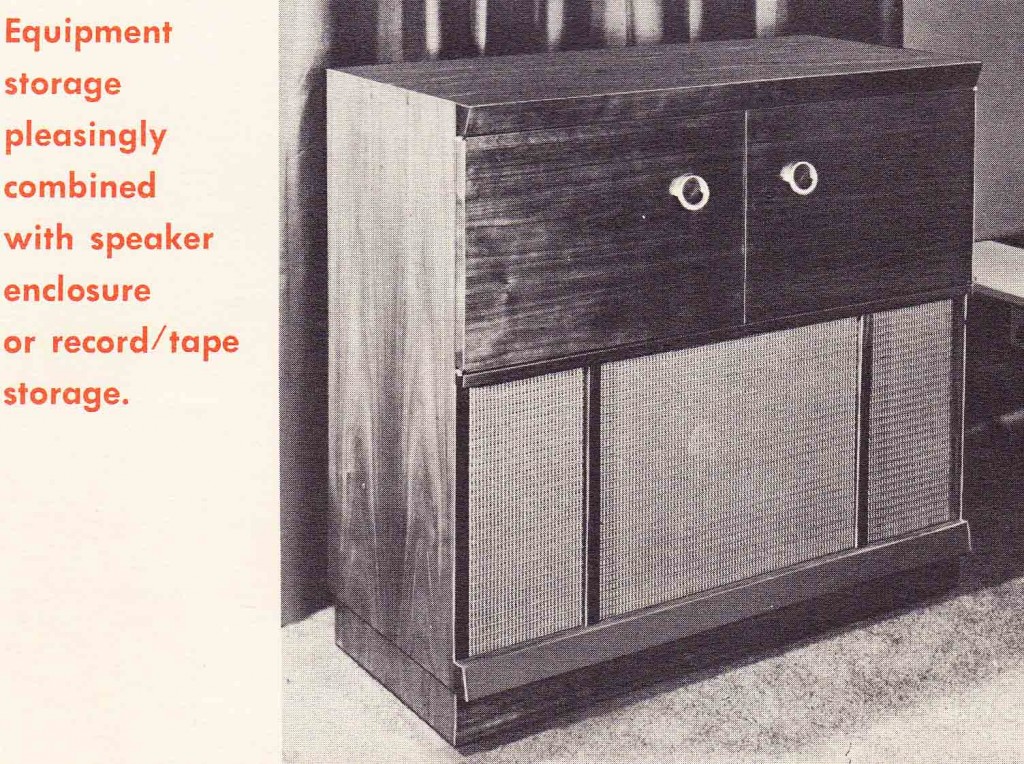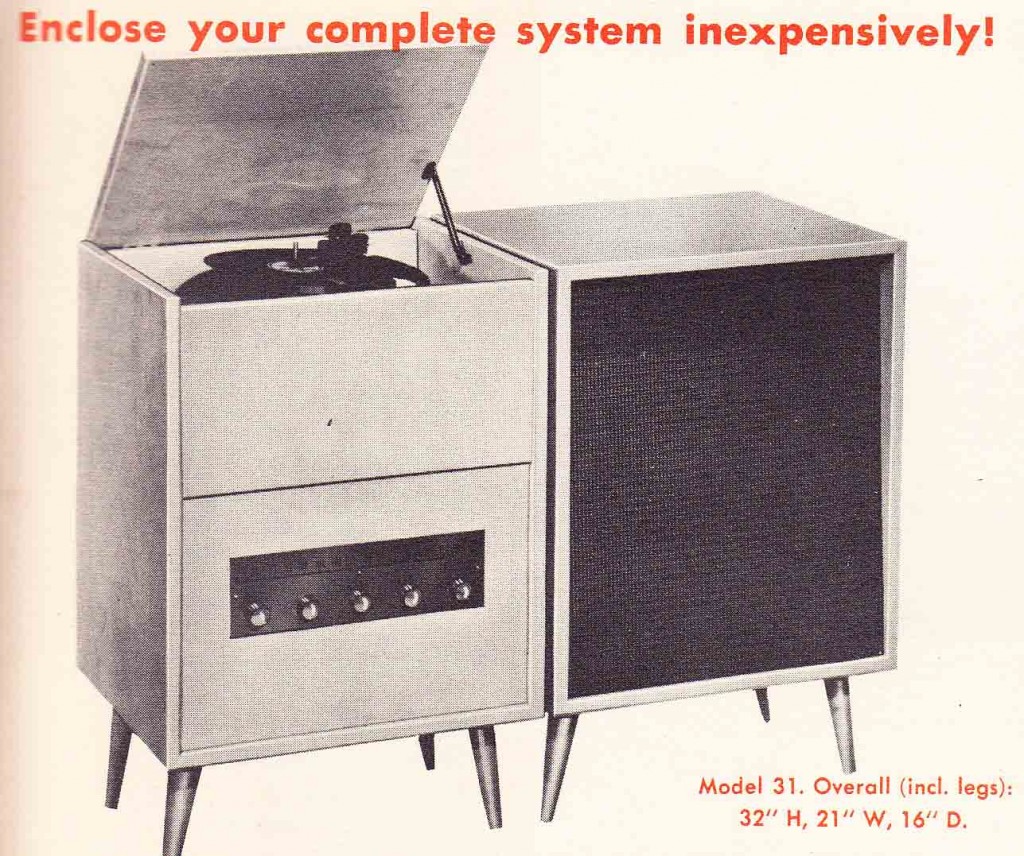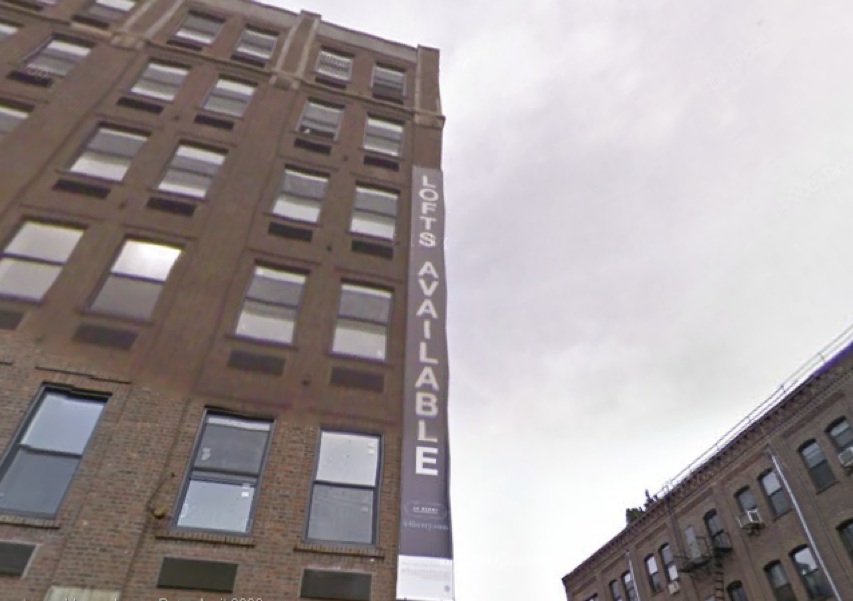 Download the complete 36pp 1957 Cabinart catalog (presented in three parts due to size)
Download the complete 36pp 1957 Cabinart catalog (presented in three parts due to size)
DOWNLOAD PART 1: Cabinart_1957_part1
DOWNLOAD PART 2: Cabinart_1957_part2
DOWNLOAD PART 3: Cabinart_1957_part3
Models covered include: well, hundreds of ’em. All intended for Mono operation, including the ‘Rebel’ series of corner-horns designed by Paul Klipsch.

 Above, the Rebel ‘Ortho 315’ which featured University (aka Altec) and Klipsch components.
Above, the Rebel ‘Ortho 315’ which featured University (aka Altec) and Klipsch components.
When I think of ‘Hi Fi Furniture’ I immediately envision the wares of the Bell’ogetti brand (now known simply as ‘Bell’o’). Their classic 80s and 90s designs were largely minimal, metal, and exposing the equipment in a dramatic manner. Hi-Fi furniture of the 50’s was designed rather to hide and/or disguise the equipment: to ‘blend’ with the more traditional home-furnishings such as the hutch and end-table.


 An interesting side-note: it seems like a mono-system offers more opportunities for designing attractive, unobtrusive hi-fi furniture. Once you can commit to a single set of speakers, why not simply put the components in the same spot? The whole system can be aesthetically unified, there are no wires running all over the place, etc. Stereo console-furniture was certainly made as well in the coming years, but at some point we seem to have entered an era of conspicuous display of audio equipment rather than following a policy of tasteful containment.
An interesting side-note: it seems like a mono-system offers more opportunities for designing attractive, unobtrusive hi-fi furniture. Once you can commit to a single set of speakers, why not simply put the components in the same spot? The whole system can be aesthetically unified, there are no wires running all over the place, etc. Stereo console-furniture was certainly made as well in the coming years, but at some point we seem to have entered an era of conspicuous display of audio equipment rather than following a policy of tasteful containment.
 Above, a Cabinart print-ad from 1956. As the advert points out, most Cabinart models were available in three variants: assembled+ finished, ready-to-finish, or as ready-to-assemble-and-finish.
Above, a Cabinart print-ad from 1956. As the advert points out, most Cabinart models were available in three variants: assembled+ finished, ready-to-finish, or as ready-to-assemble-and-finish.
 Above, 99 North 11th street, Brooklyn, NY, former home of Cabinart, as it stands today. Lofts are available, btw. This structure is a stones-throw away from Beacon’s Closet and the Brooklyn Brewery, two icons of the ‘New-Williamsburg’ if ever there were.
Above, 99 North 11th street, Brooklyn, NY, former home of Cabinart, as it stands today. Lofts are available, btw. This structure is a stones-throw away from Beacon’s Closet and the Brooklyn Brewery, two icons of the ‘New-Williamsburg’ if ever there were.


2 replies on “Hi-Fidelity Furniture circa 1957”
It was very common for expensive hi-fi equipment to be hidden from view in custom furniture such as this. Ironically, it was only moderately more expensive to do this than to buy the mostly junk console “hi-fi’s” which we all remember as popular from just after WWII to the early seventies.
A great number of classic amplifiers, preamps, tuners and so forth have been dumpstered when so mounted because it was assumed they were the old brown goods consoles, good for nothing. Another sad fate are those that were built in to walls or counters and simply sheetrocked over when the house was modernized.
Another, not commonly remembered trend was the combining of the home hi-fi system with electronic organs and using the hi-fi as a PA. Hammond organs almost always were sold with Leslie speakers, but most of the other brands offered line out options and an installed system with a separate amplifier-sometimes as huge as the McIntosh MI200 or some Altecs running 211s-and three way speaker system. These installs are especially likely to yield choice bonbons such as Altec Duplex or Jensen triax drivers, Altec or JBL horns, Altec mixers, and so forth. Look for odd connectors in walls on these.
Organ systems were always full custom installs, but inhouse hi-fi (as separate from, but as with NuTone intercoms) often will appear in all the houses in a subdivision built out between the late fifties and mid-60s. When something quit, the whole system fell into disuse due to the awkwardness of troubleshooting and sat unused until ripped out or covered over during a refurbish. A lot of “moderate midcentury moderns” were ‘updated’ in the late 70s and early 80s when all that “dated Jetsons crap” was considered just old and dorky.
I’m just digging out, some, Well-Packed Speaker Items from back in the 60’s.. units are by, Ev, and Klipsch; I now need, Corner-Horn DIY Projects to reuse these units.. Woofers, Tweeters, Sqawkers in Pairs, w/ PWK Xovers…. Thank You from just outside Boston… JD